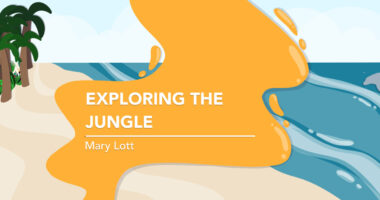
Causes of cold agglutinin disease
Last updated Sept. 19, 2025, by Marisa Wexler, MS

The causes of cold agglutinin disease (CAD), an autoimmune disorder, are self-reactive antibodies that stick to red blood cells at low temperatures, marking them for destruction.
There are two types of CAD: primary and secondary. While both are marked by the production of such antibodies, they have distinct underlying causes. Primary CAD is associated with an abnormal growth of certain immune cells, whereas secondary CAD occurs as a complication of other conditions. Understanding the underlying causes is important to provide optimal management of the disease.
How the immune system triggers CAD
Antibodies are proteins made by the immune system to defend against potential threats. An antibody binds to a specific molecular target with very high specificity, signaling the immune system to attack the target. Normally, antibodies target parts of bacteria and viruses, but in autoimmune diseases like CAD, the immune system produces antibodies that wrongly target the body’s own healthy tissues.
CAD is defined by self-reactive antibodies that target red blood cells, which are responsible for carrying oxygen through the body, at cold temperatures. These antibodies, called cold agglutinins and most commonly of the IgM antibody class, bind most strongly to red blood cells at temperatures of 0-4 C (about 32-39.2 F), though they may also bind at warmer temperatures.
When cold agglutinins bind to red blood cells, they cause the cells to clump, or agglutinate, and recruit and activate a group of immune proteins called the complement system. This ultimately leads to red blood cell destruction, referred to as hemolysis, which occurs mainly in the liver and spleen (extravascular hemolysis), but also within blood vessels (intravascular hemolysis). The clumping and destruction of red blood cells ultimately drives symptoms of CAD and can cause hemolytic anemia, when red blood cell levels are abnormally low because the cells are being destroyed faster than the body can replace them.
Cold agglutinins are detectable in many people who don’t have CAD, but usually at much lower levels than those seen in people with CAD.

Primary causes of CAD
Primary CAD, sometimes simply called CAD, occurs in the absence of an underlying health condition. It is believed to be a slow-growing clonal lymphoproliferative B-cell disorder — meaning it is marked by a slow, abnormal growth of B-cells, which are the immune cells responsible for making antibodies.
Essentially, it’s thought that primary CAD occurs when B-cells that make cold agglutinins start to grow too much, causing levels of these antibodies to increase to the point that they eventually cause disease.
The abnormal B-cell growth that characterizes primary CAD occurs in the bone marrow, the spongy tissue in bones where new blood cells are produced. While it resembles what is observed in some types of blood cancer like leukemia and lymphoma, abnormal B-cell growth related to primary CAD is not considered cancerous.
This atypical B-cell growth can progress to blood cancer, but this is fairly rare. In one study that followed 232 people for up to eight years after a diagnosis of CAD, less than 4% developed CAD-related blood cancer.
It’s not clear exactly what causes the uncontrolled growth of B-cells in primary CAD, but specific molecular changes have been detected in B-cells of these patients. These include:
- an extra copy of chromosome 3 (trisomy 3)
- activation of certain genes used to make antibodies, including IGHV4-34, IGKV3-20, and IGHV3-15
- mutations in certain genes that help regulate B-cell growth, activity, and survival, such as KMT2D, CARD11, IGLL5, and CXCR4.
Secondary causes of CAD
Secondary CAD, also known as cold agglutinin syndrome or CAS, develops due to another health problem, such as an infection, cancer, or another autoimmune disease.
Triggers of secondary CAD include:
- infections with certain viruses, including Epstein-Barr virus, hepatitis B, hepatitis C, cytomegalovirus, adenovirus, influenza A, and COVID-19
- infections with some bacteria, including Mycoplasma pneumoniae, Legionella pneumophila, and Chlamydia pneumoniae
- certain types of cancer, including lymphoplasmacytic lymphoma, marginal zone lymphoma, non-Hodgkin lymphoma, and Waldenström macroglobulinemia
- autoimmune diseases such as lupus and rheumatoid arthritis.
The mechanisms underlying secondary CAD aren’t fully understood. However, it’s broadly thought that molecular proteins in certain viruses and bacteria are structurally very similar to proteins found on human red blood cells. As such, these microbes may also activate the abnormal B-cells that produce cold agglutinins. Certain B-cell cancers are thought to cause CAS by promoting the excessive growth of a single cold agglutinin-producing B-cell.
Identifying the underlying cause and distinguishing primary from secondary CAD is important to guide treatment, as approaches may differ between the two. Effective management of primary CAD typically involves immunosuppressants, while treatment of secondary CAD usually requires addressing the underlying condition.
Risk factors and triggers
CAD affects roughly 1 of every 1 million people. Anyone can get the disease, but research to date has identified some risk factors for CAD.
- Age: CAD usually develops between the ages of 40 and 80.
- Sex: CAD is about twice as common in women as in men.
- Other health problems: People with underlying health conditions such as infections and cancer may be more likely to develop secondary CAD.
- Climate: CAD is more commonly diagnosed in colder parts of the world, likely because patients in these areas are more likely to experience symptoms that prompt them to seek medical attention.
Because cold agglutinins attack red blood cells at low temperatures, exposure to cold can trigger or worsen CAD symptoms. Symptoms may also be triggered by major stresses on the body, such as fever-inducing infections, major trauma, or surgery. Knowing what triggers CAD may help to prevent disease worsening in people with primary CAD. Taking steps to avoid the cold and infections is part of disease management for people living with CAD.
Cold Agglutinin Disease News is strictly a news and information website about the disease. It does not provide medical advice, diagnosis, or treatment. This content is not intended to be a substitute for professional medical advice, diagnosis, or treatment. Always seek the advice of your physician or other qualified health provider with any questions you may have regarding a medical condition. Never disregard professional medical advice or delay in seeking it because of something you have read on this website.
Recent Posts
- Oral therapy iptacopan eases anemia in CAD patients: Small trial
- When living with CAD, even a short trip can be a nightmare
- Real-world study confirms long-term safety of Enjaymo for CAD
- After months of fatigue, feeling better is what I want for Christmas
- Man’s case shows bacterial lung infection can ‘provoke’ clots, CAD
- Living with cold agglutinin disease involves cruel curveballs
- Gastric lymphoma found to be hidden cause of refractory CAD
- New CAD treatments, like reading progress, prove growth is possible
- ANX1502 proof-of-concept trial to wrap up next year, Annexon says
- What if Sadie Hawkins Day made me the doctor?


